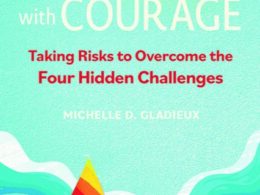I met John Barboni following a rather powerful presentation on the societal impacts of consumption given by his colleague David O’Higgins and Jason Levine. Barboni and O’Higgins have formed an interesting partnership with architects Tom Abraham and Carl Stein, FAIA. …
Barboni is co-founder of elemental, a New York City-based collaborative where he and his partners concentrate on promoting sustainable energy-conscious architecture. Barboni provides design, strategic creative direction, brand development, management and implementation of elemental projects.
With his background in architecture, Barboni has an interesting perspective on consumption. He is front and center in seeing the very human, visceral desires about space as well as the raw materials which make the spaces in which we live. Given that he is in a position to advise clients on the best approach to meet those needs, and in the midst of “everything new, green, hip and current” I wanted to get his perspective on architectural trends.
It’s not about simply coming-out with more green products – essentially selling more stuff so businesses can make another buck under the guise of social consciousness. The current escalating consumption of resources by humankind is having a catastrophic effect on our planet. This over-consumption has been the direct result of a business paradigm that equates success with consumption. The consumption=success paradigm can not be sustained.
Businesses will enjoy steadier, more manageable growth if they are able to evolve an operating strategy in which the definition of success is decoupled from consumption.
Examples:
-
Ford: used to push big cars. The bigger car fulfilled the same function as small one – transport; now they must adopt a new paradigm. The old days of excess are over and they are beginning to address some of these issues with smaller more-efficient cars.
-
Horny Toad: A Colorado clothing company that inspires their customers to seek adventure, activity and outreach in their local community.
The average American hasn’t really come to terms with the severity of some of these issues…what it means in the way we live our lives. The real price of goods must begin to take shape as a way to educate the consumer. For example, the price of a bottle of Poland Spring water is selling in NY for $1. The true lifecycle costs of that bottle when considering the resources that go into is production, transport, disposal, and full environmental impact, are actually much higher than $1. There is price adjustment going on to promote consumption. This mode of consumer behavior is parasitic.
The divide is ever deeper; the top ,01% of the upper class control the same wealth as the bottom 90% of the world’s population combined. That has severe consequences for our society, from both an economic and a cultural perspective. As the middle class is wiped-out, social nodes for creative thinking and interaction are ever-more endangered by the extraordinary price escalation resulting from speculation.
The world population is approaching record numbers, and much like a Petri dish with finite edges, we are reaching the limits of sustainable growth. Elemental’s feeling is not to back away from this issue; they want to talk about the message. “Available resources are finite. We must curb exponential consumption and maximize efficiencies. These are not new, revolutionary ideas – we are simply reasserting their importance.”
elemental remains optimistic that the current green trend is not just a fad. “This has been Carl’s life’s work. He’s had almost 40-years of uphill struggle to communicate the message that green architecture is important. This time reception of the message feels different. People are realizing that it’s beginning to affect every American.”
Can Government help?
The issue of government control and regulation is a sensitive one. Germany placed a significant government subsidy on solar panels, so everyone got one, thereby creating a temporary shortage of silicon in the world, and driving-up prices. Yet, in a typical year, Germany gets less sunlight than almost anywhere else in the world. As a result of the government subsidy the raw resource (silicon) flowed into a part of the world where it was least efficient to use it.
Energy coupons could be an effective alternative. Everyone (rich or poor) could be allocated coupons or credits for x BTUs of energy per month. If you exceed your given allowance, then the price for extra energy would be at a premium. Un-used coupons could be traded on the open market.
It’s not up to any one discipline (government, scientists, economists, architects) to resolve these issues. It will take cross-discipline collaboration. Consumer education will be a powerful component.
About Elemental
elemental is an award-winning New York City based creative consultancy consisting of elemental architecture llc & sine elemental llc, committed to social responsibility in sustainable architecture and strategic creative direction for brand identity & media among emerging environmental, cultural, and consumer paradigms.
Founded on over 40-years of research and experience in energy-conscious design, current elemental architecture projects include ground-up new commercial and residential construction in Manhattan, historic reconstruction for the City College of New York, sustainability consulting for a 275-acre development in the Dominican Republic, and interiors for New York City’s first ‘green’ boutique hotel.
Led by over 20-years of experience in strategic marketing, brand identity and media consulting for several of the world’s largest and most visionary companies, sine elemental projects include strategic creative direction for WPP events group MJM Interactive, identity for downtown’s Cooper Square Hotel, Greenhouse 26, and several other boutique fashion, art, retail, and on-line ventures.
elemental is informed by a disparate but deep set of experience. From advertising and identity to architecture, design, letters and film the breadth of experience is concerted by commitment to methodology. Elemental never applies arbitrary style, trend or fashion as a solution. Instead, Elemental assesses the structures, functions, and cultural contexts of the client to provide the basis for authentic communications. From this process arises a form and style unique to the client’s mission, connecting the client with its audience and cultural environment.
john barboni
John Barboni draws on a diverse background that merges architecture, design, art and fashion. Mr. Barboni’s leadership at elemental is predicated on a deep understanding of design management and operations. Mr. Barboni’s experience includes work in fashion through Ford Models, New York and Best One, Paris. Additionally, as founder of art collective NYCART.org, Mr. Barboni maintains a commitment to support emerging artists. John holds a degree in Architecture from the University of California at Berkeley and further studied architecture, economics, art history and Italian in Venice, Italy and New York University.
david o’higgins
David O’Higgins brings elemental world-class strategic branding and creative leadership. His experience includes building several of the world’s largest brands with Enterprise IG, Landor, Interbrand and Siegel+Gale. O’Higgins helped re-define global television, print, retail and online brand identities for companies including Royal Dutch Shell, Ford Motors in France, and American Express Blue. Additionally, he has defined the identities of such cutting edge clients as haute couture fashion label, Alexander McQueen and has worked with artists such as David Byrne/Talking Heads. O’Higgins has lectured on branding and design in academic and professional circles in both Europe and the US. David studied design at Bath Academy of Art and holds a Bachelors Degree, with Honors, from De Montfort University, both in the United Kingdom.
tom Abraham. aia
Tom Abraham brings to elemental over a decade of experience in design, higher education and management. His design work includes a wide variety of built and conceptual projects, as well as object and furniture design. Mr. Abraham complements his leadership with a commitment to higher education having served on numerous design reviews, taught at The City College of New York School of Architecture and New York University College of Arts and Science. He has also held exhibitions of his design work in Europe and New York. A graduate of The Cooper Union for the Advancement of Science and Art, Mr. Abraham is also a LEED Accredited Professional by the US Green Building Council, a member of the American Institute of Architects and licensed to practice architecture in New York State.
carl stein, faia
Carl Stein has pursued design in tandem with research throughout his career and is internationally recognized for his contributions to the field of sustainable design. His leadership at elemental is founded on a methodological approach towards the design process. For his achievements, Mr. Stein has received major awards and honors. Mr. Stein is the author of many pioneering works on ‘green’ architecture, such as Energy Conscious Architecture; the first in a series commissioned by the National Council of Architectural Registration Boards, and has chaired the National AIA Energy Professional Development Task Force. Published in The New York Times and Progressive Architecture, Mr. Stein also lectures worldwide and has served as consultant for the US Supreme Court, US Department of Energy and the New York State Council for the Arts. He has served as Professor of Architecture at The City College of New York and on numerous design reviews nationally. Carl studied architecture at The Cooper Union for the Advancement of Science & Art and Harvard University Graduate School of Design after completing studies in physics at Middlebury College. Mr. Stein is licensed to practice architecture in numerous states, is a LEED Accredited Professional by the US Green Building Council, and a member of the American Institute of Architects’ prestigious College of Fellows.
Look Outside Your Discipline, Network Through Values
For nearly ten years, Tom Abraham and I worked under Carl Stein. Carl and Tom , committed to education, were also teaching together at the City College of New York. Through our work together on various projects, we realized that we connected on many levels and kept returning to the same values and themes.
Several events converged: I was approached by a client that was interested in doing a project with us; it was the perfect opportunity to launch Elemental with Carl, Tom, and David, who had come to us through Tom’s wife after having just left his branding agency in search of socially meaningful work. David initially directed the branding for elemental prior to becoming a partner.
It has been incredible adding David and his 20 years of branding expertise to a bunch of architects. He’s able to express our own views in such revolutionary ways – we quickly realized we were on to something special, and wanted to offer the same service to our clients.
David is instrumental to evocative communication with our clients while our experience as architects helps to substantiate the conversations. As with many technical professions, there is a definite methodological process involved in taking our projects to fruition. Before that happens though, we need to get “inside” businesses and understand who they are, what they do, who they want to be, and how does that relate to the changing cultural, environmental, and economic context. Once that foundation of understanding has been achieved, we then work to communicate that message in authentic, clear and constructive ways. The result or product generated from completing this approach effectively is beauty.
Help Define Your Space
We actively lecture and contribute to articles as a way to keep people talking a remain part of the larger conversation. Tom, Carl and David are actively teaching as education continues to be something that we all care profoundly about. Carl is also currently finishing a book called “Greening Modernism” which discusses the interconnections between green architecture and Modernist architectural thinking.
In our work, we consider both the social aspects and the business model. The more that people are becoming aware of some of the issues that we have discussed today, the more interest there is in our business. Our efforts in this space of education and communicating the message of sustainability are beginning to actually work out that way.
Many people think being green or sustainable is about a compromised “nuts and berries” or “hippie” aesthetic. In our experience, we have found that an appropriate green approach actually enhances the beauty of the product and elevates the human spirit. One of the examples we like to use: think of the experience of lying against a large stone in the desert to enjoy its radiating warmth stored from the sun. Compare that to the experience of using a radiator blowing hot air on you for warmth. The natural opportunity offers a much richer, dynamic, and greener experience.
There remain many misconceptions in the current green market trend. For example, a couple may build a giant 10,000 sq foot house, put solar panels on it, and say “I have the greenest house in the neighborhood” and someone might even write some articles about how innovative it is. The notion of curbing consumption asks: do two people really need 10,000-sf? Why not build a 1,000-sf home and spend your resources making the project as beautiful and efficient as possible? Even without solar panels or any other green add-ons, they would be much greener than the alternative; it’s an issue of consumption.
Another misconception is that it has to look green to be green. Green should look and feel like the best quality out there. It’s not about just sticking a recycled logo on things – it’s about maximizing the potential of material and resource use.
Understand The Climate In Which You Live
The period we are entering now is much closer to the great depression than the energy issues of the 70s. There is a very severe period of change coming. Roosevelt’s New Deal enacted a whole series of programs that changed the way money was distributed in this country. We are at the brink of that now, and it will require a major change in the way everyone is doing everything. We want to help people to understand that and work to guide people through the upcoming transitions.
In the US we have been taught a culture of consumption because it fed the markets. It was a very conscious decision to steer things in that direction and it was good for short-term business growth. We are just beginning to feel the consequence of that behavior now. Americans are in love with cookie-cutter solutions to problems. We find a house design that is perfect for one particular climate and we scatter a million of them across the country because its fast, easy and cheap. Then you end up with a lot of things that have no contextual relevance and you’ve wasted a lot of precious resources.
The priority is here has been about immediacy.
The internet came along and the attitude was the same “just get it out there”, “publish first, edit later”, “build it and they will come.” The faster you were, the more successful you were. Those days are over. People need to take the time to measure twice and cut once. Be exceedingly mindful of how we use our resources…
That’s where the optimism comes in. There is nowhere to go but up. Now is the time to lead – be a pioneer in your industry.





